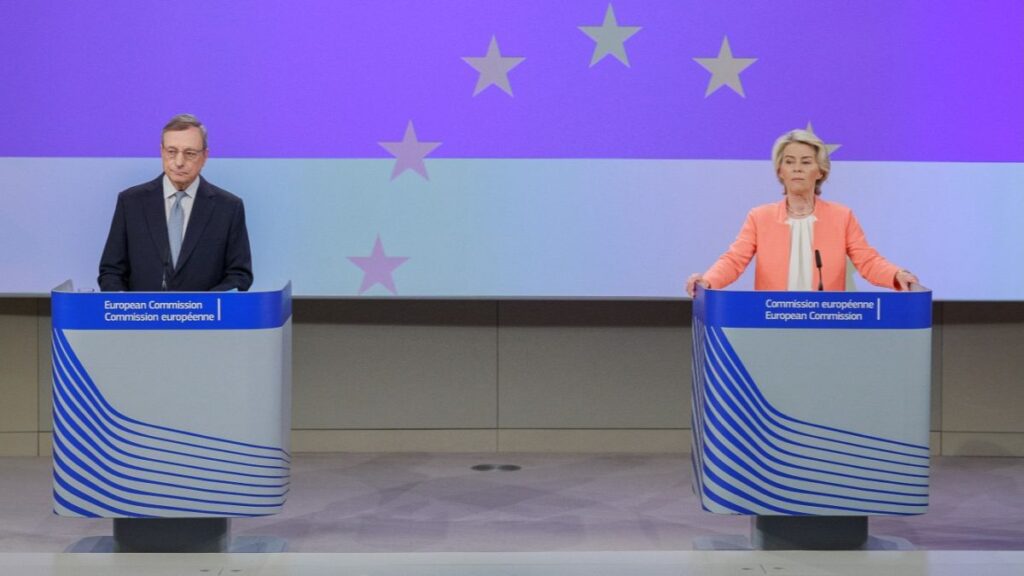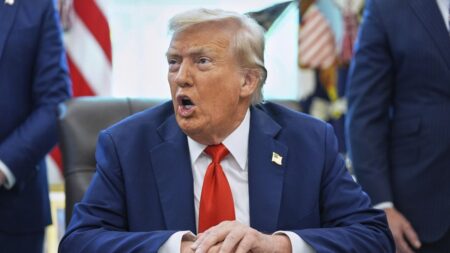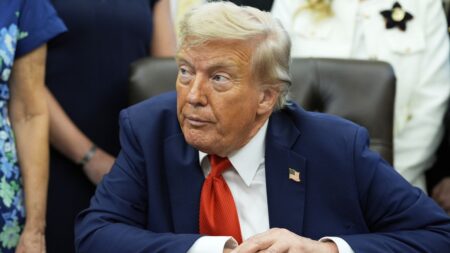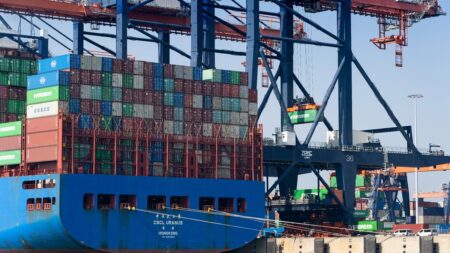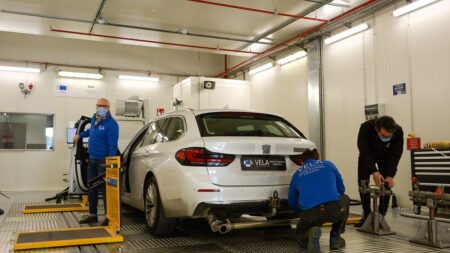No one likes to play the supporting role — but that’s the position the EU has been relegated to on the global stage of heavyweights. Such was the harsh assessment delivered by Mario Draghi, former Italian prime minister and ex-president of the European Central Bank, on the “events” that have shaped 2025.
China does not see the European bloc as an equal partner, the EU is playing only a “marginal” role in Ukraine peace negotiations, and it has become little more than a spectator of the hundreds of thousands of deaths in Gaza.
According to Draghi, the bloc of 27 can no longer believe that its economic size automatically guarantees it equal standing in global trade and geopolitics. “This year will be remembered as the year in which this illusion evaporated,” he said in a speech last Friday.
“Our political organization must adapt to the demands of its time when they are existential,” Draghi warned.
Still, his warning is hardly new. A year ago, the former EU Council president already sounded the alarm over the bloc’s competitiveness problem and called for “radical change” to avoid falling behind the US and China.
In his landmark report last year, Draghi described the end of an era of open, rules-based trade and ushered in a call for a new EU industrial strategy. The recipe? Less regulation, more coordination among member states. Fewer barriers inside the single market, more joint investment projects, and deeper integration of capital markets.
But one year on, what has Europe achieved instead?
Joint borrowing? Still a ‘no’ from fiscally conservative countries.
Draghi’s report dominated conversations in Brussels and beyond for months, particularly due to two aspects: the €750–800 billion annually needed to remain globally competitive, and the call for common debt.
Last September, the report argued that joint borrowing should become a regular tool to finance Europe’s digital and green transitions, as well as urgently needed defence capabilities.
In March, the European Commission responded with SAFE, a loan scheme designed to raise up to €150 billion on the markets so member states could jointly finance defence acquisitions. But fiscally conservative governments such as Germany and the Netherlands remain opposed to anything resembling the Eurobonds issued during the Covid-19 pandemic.
Some of these so-called “frugal” states also pushed back against the Commission’s proposal to double the long-term EU budget — currently around €1 trillion — by 2028.
“We do not see the need for new own resources or new common borrowing. There is no such thing as a free lunch,” Sweden’s representative Jessica Rosencrantz said at a July meeting of EU ministers in Brussels.
Yet many analysts argue that the massive investments needed to rearm Europe and turn it into a greener, more digital economy remain far from materialising — and that the bloc may soon need to explore out-of-the-box solutions.
“At a moment when the guarantor of the international order, the US, is retreating, even a united Europe will be ineffective unless it backs up its economic might with military strength,” Bruegel senior fellow Guntram Wolff told Euronews.
The missing piece: decarbonisation
Paradoxically, one of the major omissions in Draghi’s latest speech was one of the central points of his report: decarbonisation.
Miguel Otero, senior fellow at the Real Instituto Elcano in Madrid, said this disconnect reflects a widening gap between the geopolitical debate and the lived reality of many Europeans — particularly in countries like Spain, where climate change is increasingly severe.
“Trump has had a major influence on the agenda over the last year,” Otero told Euronews, adding that climate action remains politically complex. But, he warned, “moving away from a reality that is visible and has enormous costs — because once again we are reacting rather than preventing — always ends up being more expensive.”
The European capital markets remain fragmented
As throughout Draghi’s report, the message on capital markets was clear: the more integration, the better. Yet calls to consolidate remain a longstanding Brussels demand that EU member states themselves have repeatedly resisted.
The economic challenges are obvious. Europe faces a widening GDP gap with the US, driven by slower productivity growth and an innovation shortfall. Draghi estimates that bridging this gap will cost between €750 and €800 billion annually in the years ahead.
Moreover, Europe is currently exporting its savings to strengthen capital bases abroad instead of investing domestically.
To address this, the Commission has floated proposals such as the Defence Readiness Plan for 2030, the Savings and Investment Union, and the Competitiveness Compass. But has the EU delivered the “radical change” Draghi demanded? Not really.
“What has been done this year has been more about waiting to see what happened in Washington and then reacting, rather than proactively implementing many of the major projects in the Draghi report,” Elcano’s senior fellow told Euronews.
On investment, Europe remains far from the scale Draghi called for.
“Common borrowing for common priorities remains unlikely, and completing the capital markets union — now rebranded as the ‘Savings and Investments Union’ — would mean solving politically sensitive issues that have been stuck for years. Progress, therefore, is incremental at best,” Philipp Jäger of the Jacques Delors Centre said.
The EU, Jäger added, understands its problems and is making moves to address them — but the pace and ambition are far from the “radical” change demanded by today’s shifting world.
Reform or face a ‘slow agony’
“If you want to change the world, start with yourself,” Gandhi once said. It’s advice not far from Draghi’s own.
The IMF estimates that if the EU cut internal barriers to match the level seen in the US, labour productivity could rise by about 7% within seven years.
Analysts see the same big picture: the rise of aggressive industrial policies in the US and China, the erosion of multilateral institutions, and the growing focus on economic security have rewritten the rules of global competition. Europe has yet to adapt.
“The growth model based on heavy reliance on exports, and on the US financial system, has become very vulnerable at a time of deep transatlantic frictions,” Wolff said.
Global trade is now shaped by geo-economics, security, and supply chain stability. Yet despite new agreements secured in recent years, the EU remains dangerously dependent on Chinese rare earth imports. It has also signed a trade deal with the US that critics dismiss as a capitulation to Trump.
For many, Trump’s return to the White House has been not just a wake-up call but a complete reset of the global trading system.
“Some had hoped that the Trump administration’s aggressive trade — as well as monetary and financial — policies would push EU countries to respond. But that hasn’t really happened,” said Pierre Jaillet, economist at the Institute of International and Strategic Relations (IRIS).
The US-EU joint trade statement of August 21 may have protected the core interests of Europe’s industrial powers, he argued, but it falls far short of a genuine EU strategy for Washington.
Andrea Renda, director of research at CEPS, was even more direct: “The EU faces potential blackmail from Washington, given the need to secure US support for Ukraine. But that cannot be an excuse for inaction. The longer we wait to diversify our trade relationships and remove barriers within the single market, the deeper we risk falling into this abyss.”
So far, the EU has mostly focused on declarations and easing regulatory burdens, with less progress on deeper reforms.
“Most importantly, the governance aspects of the report are still being ignored: there is a need for much more Europe — and a more agile governance to fully leverage the Union’s power and potential,” Renda concluded.
Read the full article here







